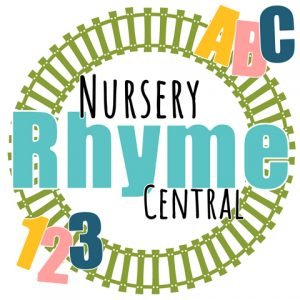We all want the best for our children, and so when it comes to buying toys not only do we want our children to be able to play with them for hours on end, we also want them to be able to learn from the experience whilst doing their most important work – playing! But how do you know if a toy is ‘educational’?
By definition, an educational toy teaches the child playing with it a skill or knowledge they did not know or fully grasp before hand. A toy also has to be fun, or else it ceases to be a toy. But we’ve all had the experience of buying a good ‘educational’ toy that a child ignores or breaks. So, what makes a good educational toy? What makes a toy educational? And how do you choose a toy that is both educational and a joy to play with?
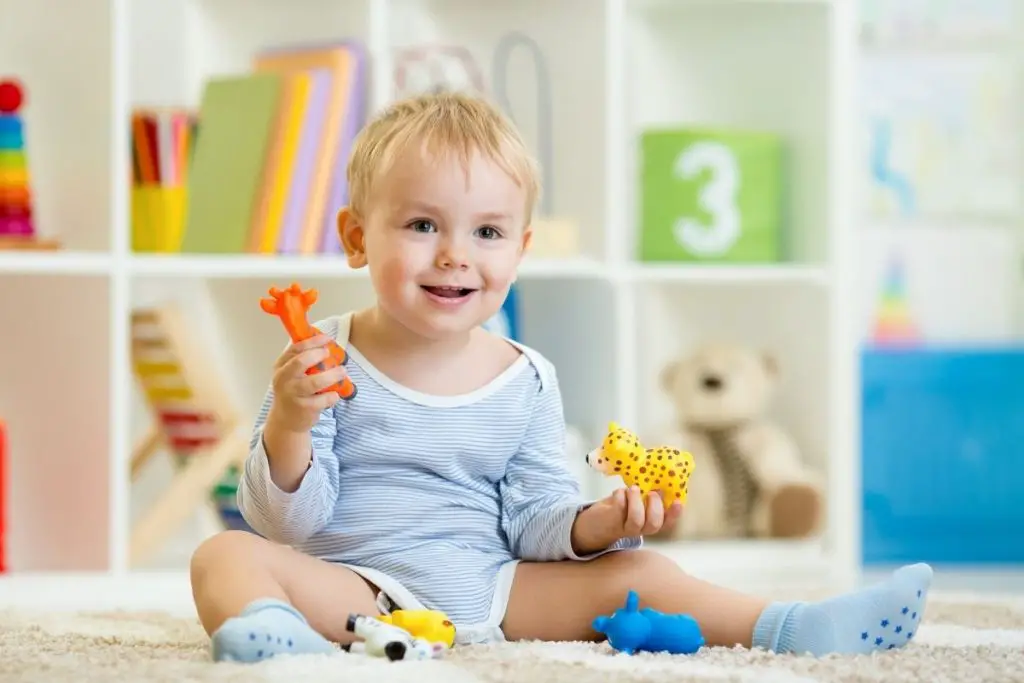
What makes a good educational toy?
Play is ‘the work of children’! They love to play kitchen, school, caring for baby and other games where they learn and make sense of the world. Children already know how to use most anything to create a game and play with, but carefully selected toys can help children enhance their work and play and help to develop the necessary skills to tackle life tasks.
A toy can be anything that a child plays with – children will make a toy out of ordinary household objects, such as a pot and spoons becoming a drum, or a set of cushions becoming a fort. However, we adults generally define a toy as being specifically for children and include games, puzzles, books, software, CDs, mechanical and electronic devices, building blocks, and vehicles such as bikes.
Choosing a toy that will develop a child’s skills, enhances their creativity, and give them hours of pleasure depends on various factors – here are the 10 most important things to look for when choosing an educational toy:
- 1. Does the toy inspire learning and development?
- 2. Is the toy age-appropriate?
- 3. Is the toy appropriate for the child’s developmental needs?
- 4. Does the toy inspire interactive play?
- 5. Does the toy encourage open-ended play?
- 6. Is the toy appropriate for the child’s personality?
- 7. Is the toy well-made?
- 8. Is the toy safe to play with?
- 9. Is the toy fun to play with?
- 10. The best toy for your child is….
1. Does the toy inspire learning and development?
Simply put, an excellent educational toy is attractive to a child and encourages the development of age-appropriate skills and abilities. There are three crucial skill areas in which educational toys are helpful:
- Motor skills
- Cognitive skills
- Social skills.
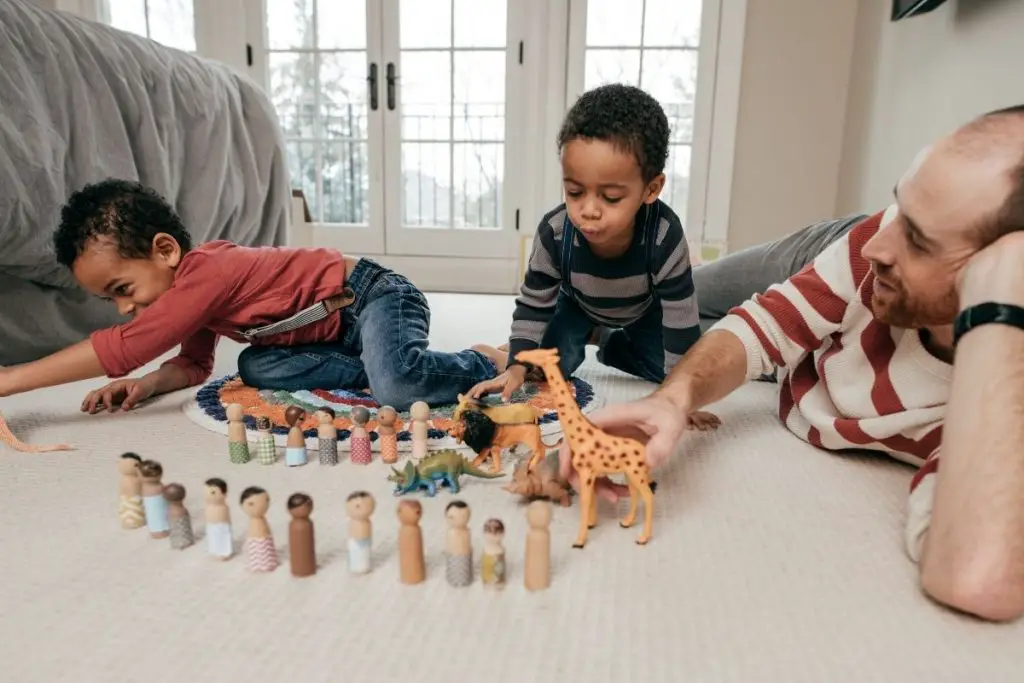
Development of motor skills
Toys can play a significant role in children’s muscle and physical development.
On the one hand, toys can develop fine motor skills, starting with the basic gripping reflex to more complex manual dexterity, such as using the fingers to string beads or lace shoes. Examples of valuable toys for fine motor skills would be construction toys, building blocks, and puzzles, while blowing bubbles teaches fine motor skills of the mouth as well.
On the other hand, toys also help children develop gross motor skills, such as sitting, walking, running, and pushing and pulling. Other gross motor skills are physical coordination and balance. Good educational toys for gross motor skills are balls, beanbags, jump ropes, wagons, bikes, and big boxes.
Both fine and gross motor skills are essential for school readiness.
Development of cognitive skills
Toys help to develop intellectual skills, such as concentration, decision-making, problem-solving, and logic. Along with cognitive skills is the knowledge children need, such as number concepts and vocabulary, which toys develop as well. Examples of toys that develop these cognitive skills are memory and matching games, interactive books, and magnetic toys.
Cognitive skills include sensory development or the development of all a child’s senses. For example, the following toys help develop:
- sight, including distance perception: colorful paints and crayons; blocks of different shapes and sizes
- hearing: rattles; musical instruments; CDs of children’s songs
- touch: water and sand toys; touch and feel books; wooden animals of different weights and textures
- smell: playdough scented with essential oils; scratch and smell books
- taste: teething rings; edible playdough.
Toys are also essential for developing creativity and imagination in children, so they need access to toys for creative play. These could be cars and trucks to drive around the house (which can suddenly become a racetrack), a pram and a doll for playing moms and dads or small figurines of animals or people to be the actors in the pretend worlds they create. Children also love to be artistic, so clay or paints are also helpful to develop their inner creativity.
Development of social skills
Pretend play or games of make-believe are essential for developing children’s social and emotional skills, particularly empathy for others. Helpful toys in this regard are dolls of all shapes, sizes, colors, and genders. Dress-up clothes, ranging from hats and masks to doctor kits, are crucial for children to take on different roles in their games. Offer props are also great for teaching social skills, such as a toy cash register that transforms any space into a shop, or kitchen items, which can become part of a home kitchen or a restaurant in imaginary play. Pretend play is also vital for teaching children vocabulary as they use words and conversation in their games.
Another good toy for developing social skills are puppets, as children may share things via the puppets that they are not willing to say face-to-face. They can also use puppets to express difficult to accept or express, emotions, such as anger and sadness.
Games are also essential to teach children the importance of cooperation and turn-taking. Board games are beneficial for this, as are experiment kits and puzzles worked on collaboratively. Children learn to win and lose gracefully and develop self-confidence.
2. Is the toy age-appropriate?
A good educational toy is age-appropriate: This essentially means a toy is suitable for a child when it challenges them the right amount -this challenge should be right on the edge of their capabilities. Toys can be described as “developmental learning tools,” so they need to be suitable for a child’s age and developmental stage.
A too simple toy may bore a child, while a toy that is too difficult for a child to play with will merely be frustrating. Small children are often unable to express their frustration adequately in words, so they may express frustration as anger in the form of a tantrum. A good toy should not require an adult’s intervention unless the child is tiny. Remember that the toy is there for the child, not for the adult.
In the United States, the age range published on toys is often related to safety issues, so check out the guidelines published by the U.S. Consumer Product Safety Commission (CPSC) and other groups to help you with buying decisions.
3. Is the toy appropriate for the child’s developmental needs?
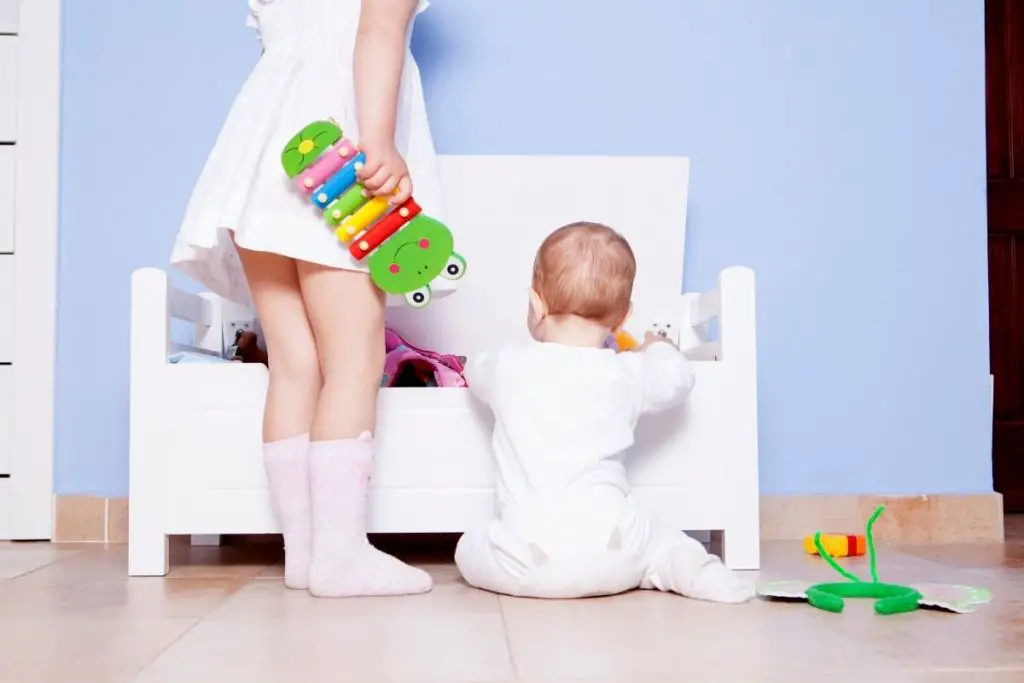
Developmental needs and age tend to go hand-in-hand. However, children’s development can range broadly across age categories, so it is wise to consider both age and developmental milestones. Here are some examples:
Educational toys for infants (1-12 months)
Babies need very few toys as everything is a learning and playing experience for them: they are engaged in sensory experience, so every new taste, shape, color, and texture teaches them something new. For example, contrasting colors are particularly appealing to infants as they have not developed their full sight abilities, which still need to be stimulated.
A baby’s most fantastic educational tool is the parent or caregiver’s interaction. Even if you buy toys for a baby, most benefit comes from you showing them how to shake a rattle, for instance, pointing out the colors and shapes on a mobile or singing along with a musical toy.
It is also important to use toys to teach infants object permanence and cause and effect relationships, such as playing peek-a-boo games where you show a toy, hide it and bring it back and building and knocking down towers of blocks.
Ideas for toys for infants:
- Mobiles
- Mirrors
- Rattles
- Soothers
- Stacking blocks/rings
- Playmats and baby gyms
- Push and pull toys.
Educational toys for toddlers (12-24 months)
Toddlers may still enjoy the toys they played with as infants, which is fine as the games they play with the toys (such as blocks) develop as their skills develop. They will still prefer interactive play with family and friends, but independent play is also possible and even if this only occurs for short spurts of time, the more you encourage independent play and provide the best environment for it to occur – independent play time will gradually increase.
Toddlers are still focused on developing their motor skills, coordination, and mobility, so they need toys like buckets, containers, boxes, stacking blocks, and small vehicles to move and build. They are also developing cognitive skills, so toys like shape sorters will help them to begin learning shapes and colors, for instance, and themed sets of toys can help them learn vocabulary (e.g., on the farm). At the same time, toddlers are developing social skills, so it is an ideal time to encourage them to develop pretend play with dress-up clothing and puppets.
Ideas for toys for toddlers:
- Balls
- Push cars
- Ride and stride bikes
- Walkers
- Themed sets, such as zoo animals or kitchen sets
- Simple puzzles
- Books
- Blocks
- Dress-up kits, such as nurse kit or astronaut suit.
Educational toys for preschoolers (2-5 years)
Small children continue to focus on building gross and fine motor skills as well as mobility and will now be ready to learn to balance and ride bikes and scooters.
Be aware of what children require for school preparedness and consider toys that develop the necessary motor and cognitive skills required before reading, writing, and doing mathematics. Choose toys that teach the alphabet, words, and number skills (such as puzzles and matching games), allowing children to have fun while retaining knowledge that will stand them in good stead at school.
Preschool is a crucial period in which to introduce books if you have not already done so. Although not actual toys, there are so many different kinds of books available and made especially for preschoolers, that they should not be overlooked when thinking about what to add to your child’s collection of belongings. Some books have hide and seek flaps for them to play with, pull and push tabs that reveal different pictures, some make noises when you press buttons and others might be made of felt and material and have many interactional aspects to them that make them more toy like than just your average picture book. Having these kinds of books that children are allowed to handle in whatever way they wish allows them to learn simple lessons such as which way a book should be read, where the front cover is, where the start and end of a book is and more!
Electronic gadgets can be introduced at this age if you wish but take care not to let them replace all the other kinds of toys children should be exposed to. Electronic devices cannot replace human interaction either and should never be used as a convenient babysitter. The American Academy of Pediatrics recommends that children under the age of two should not watch TV or play computer games at all; above the age of two, limit screen time to one to two hours per day. In our house we try to limit this to only the weekends.
Ideas for toys for preschoolers:
- Vehicles: bikes, scooters, tricycles
- Basketball hoops
- T-ball stands
- Bowling sets
- Kinetic sand
- Art supplies, including an easel, paints, paper, kiddy scissors
- Picture books and interactive play books
- Magnetic building blocks
- Counting toys.
Educational toys for bigger kids (6 years and up)
Children of this developmental stage are mastering skills and challenges and developing their own interests and talents. Fine and gross motor skills are being refined, so children may now be able to braid hair and friendship bracelets or ride bikes and skateboards unaided. They can create their own toys such as board games, or learn to sew dolls and teddy’s or clothes for those toys.
Peer friendships become more influential at this age, and many children will begin to prefer to play with other children their age, but the attention of the parent or caregiver is still essential, so ensure one-on-one time still takes place, but with toys catered to your child’s changing needs and more mature tastes.
Ideas for toys for bigger kids:
- Jump rope
- Card games and board games
- Musical instruments
- Chemistry and science sets.
- Craft and sewing kits.
- Materials to make their own toys.
4. Does the toy inspire interactive play?
A toy can only be educational if a child does something with it – a toy needs to be interactive. A child needs to be able to push, pull, build, deconstruct or create with a toy. Children usually get bored of toys that are not interactive, rendering them the spectator. This is one reason children destroy toys – they are simply trying to interact with the device.
Electronic games and gadgets, including computer and TV games, may appear interactive, but many studies show that they promote a passive style of learning and interaction. Research shows that electronic games encourage spectatorship rather than activity. There are also associated safety hazards, ranging from hearing loss (from noisy toys) and weight gain (from inactivity) to language and developmental delays. Furthermore, electronic games often reduce children’s ability to concentrate and give their attention for any length of time, as the games continually distract by light and music.
Modern children spend more time inside than children ever have before. Introducing children to gardening by supplying them with a small piece of earth and small gardening tools and seeds is a lovely way to get children to interact with the natural world. Other interactive toys includemagnifying glasses, a bug-catching kit, or even a kite. These toys make children spend time outside and develop curiosity, discovery, and a desire to learn.
5. Does the toy encourage open-ended play?
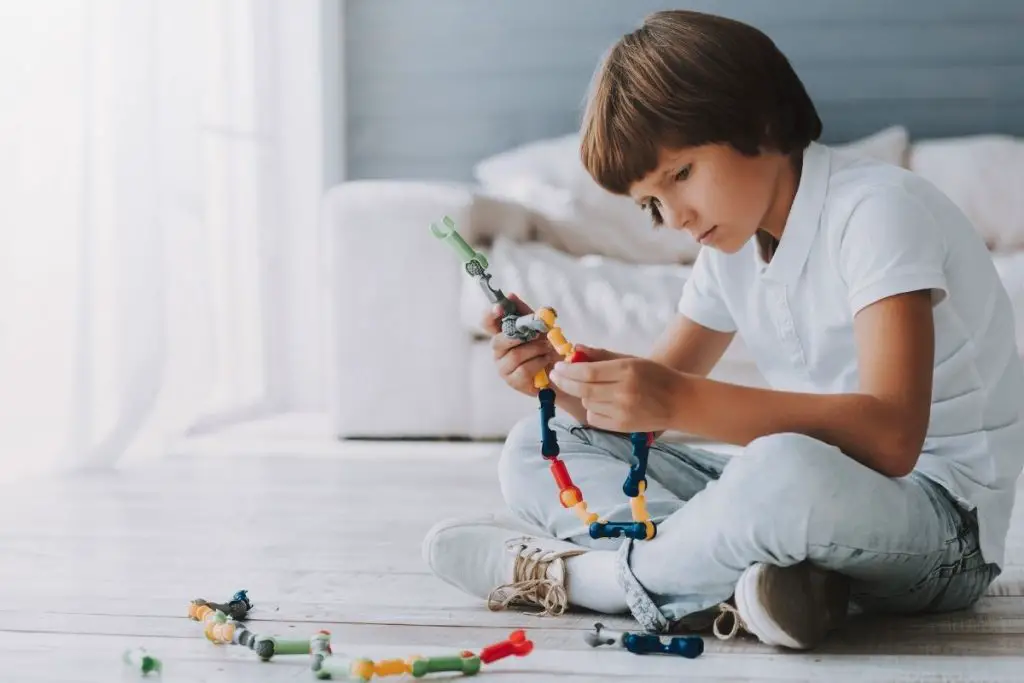
A good educational toy has multiple uses – this means that there is more than one way to play with the toy. Having numerous uses has more than one advantage. First, multi-use or open-ended toys inspire creativity in a child. Secondly, such toys can be used across age and gender, so the child can play with them for an extended period as the toys “grow” with the child. Thirdly, multiple-use toys can be used by a group of children at one time, promoting cooperation and coordination, critical social skills.
Often, the simplest toys can be put to multiple uses. Have you ever seen a child playing with the cardboard box more than the toy that came in the box? A box can become a car, a spaceship, a house, a table, depending on the game. A child can push or pull a box, put another toy – or child – inside it, or put boxes on top of each other. You can decorate a box, paint it, stick stickers on it, and even cut holes in it.
Art supplies are wonderful multi-use toys and give children hours of fun, even from a very young age. Even toddlers can finger paint. Children can create their own themed set of farm animals or dinosaurs from air dry clay or paint shoeboxes to make rooms that stuck together make a doll’s house.
Other open-ended toys are construction sets, such as Lego blocks, magnetic tiles, Mobilo or nut and screw building sets. These toys are essential for developing STEM (science, technology, engineering, and math) abilities as children are engaged in a design and application process when creating.
Another aspect of open-ended toys is that they are usually non-realistic so that children can use their imagination and impose their game upon the toy. In other words, the toy does not limit the play scenario.
6. Is the toy appropriate for the child’s personality?
It is best to try to match a toy with a child’s personality, taste, talents, and interests so that they are keen to play. So, if your child is mad about dinosaurs, it makes sense to promote that interest, rather than deciding that baseball is better because you enjoyed it at that age.
Children’s interests and preferences may indicate their personality growth, which becomes more critical as they mature. Hence, if you have a restless, active child, encourage outdoor play by providing bikes and scooters. For indoor play, arts and crafts activities will work. If your child is easily distracted, offer games to engage their interest and build their concentration, such as card and board games. In other words, try to meet the needs of the developing personality.
Gender often has little to do with children’s interests. Little girls enjoy mechanical and building toys as much as little boys do. Little boys also like pushing toy prams and putting dolls to sleep.
Of course, you can encourage children to try out new hobbies as well, particularly to expand their imagination, language, and experience. A toy can be a culturally exciting experience for a child, exposing them to an exciting new world. Many children are fascinated by Ancient Egypt and the pyramids, for instance.
7. Is the toy well-made?
Always choose toys that are sturdy, durable, and well-made so that they can hold up to regular, interactive play. Well-made toys are designed specifically for children and often have attractive colors and textures to appeal to and inspire children.
Remember that children are pretty hard on their toys, even if they aren’t particularly rough. It isn’t very pleasant to spend money on a toy only to have it break within a short time. Broken toys, particularly those with small pieces, can also be a health and safety hazard as children may cut themselves or place small items in their mouths. Instead, buy the best toys you can afford, with a warranty.
It is also worth considering whether a toy is environmentally friendly as well. Well-made toys can be reused, and once your children have outgrown them, they can be passed on to other children. Toy libraries are also a great way of enjoying toys in an affordable, earth-friendly way.
8. Is the toy safe to play with?
A well-made, strong toy is unlikely to break and be a safety hazard. Here are other safety issues to be aware of with toys:
- Ensure that the toy meets Consumer Product Safety Standards, including being made of non-toxic material and being flame resistant.
- Toys should never have small pieces that a child may want to put in their mouth. Be aware that what is appropriate for a preschooler will not be suitable for a baby or toddler: it is best to avoid marbles, coins, dice, small rubber bounce balls, and any other tiny ball if you have toddlers. This can also include not introducing small lego pieces and rather buying larger blocks made for smaller hands.
- Keep toys clean and sanitized to avoid the spread of germs. Germs can spread quickly if the toys are shared. Stuffed animals, in particular, can harbor dirt, and bath toys can go moldy quickly so make sure toys can easily be cleaned.
- Check that batteries are new, not exposed, and not leaking. Batteries contain toxic substances, and children must never be allowed to put them in their mouths.
- Try to avoid buying toys for young children that use button batteries where possible.
- Look for securely enclosed battery casings, that can only be opened through the use of a screw and screw driver or similar.
- Ensure that crayons and paints are marked ASTM D-4236 on the package: this means that the American Society for Testing and Materials has evaluated and approved them. Or look for a similar approval notice in the country you are buying them in.
- Avoid toys with any toxic substances – some old toys still contain lead paint.
- Avoid shooting toys that can harm other children.
- Ensure that children wear helmets and appropriate padding when riding bikes and scooters.
- Ensure that riding toys such as rocking horses come with safety straps or harnesses and are stable enough not to tip over.
- Keep children away from fireworks, matches, sharp scissors, and uninflated or broken balloons.
Toys can also encourage unsafe behavior in children. Toys should nurture childhood, not promote adult behavior. For example:
- Toys linked to violent TV shows and the media can encourage aggression in children. Avoid exposure to both the press and these toys and instead, encourage empathetic and compassionate behavior.
- Dolls with mature body shapes and “sexy” clothing can develop or suggest that is what your little one should aim to be and look like when they are older. Providing a range of dolls is better so you can ensure that the messages that the toys themselves are sending are age-appropriate and align with your family values.
- Toys linked to any television show are promoting the values and behavior of the characters in the show and so you may want to assess whether you want any merchandise related to those shows in your home.
9. Is the toy fun to play with?
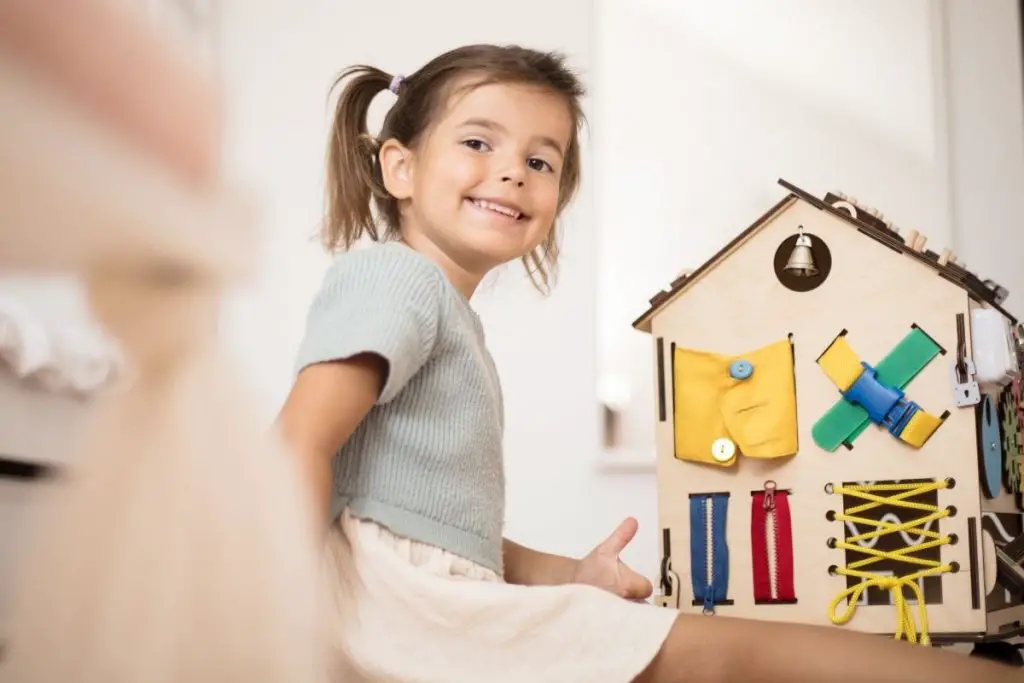
Even if a toy is age-appropriate and develops all the fine motor skills in the world, a child will not play with it unless it is fun to do so. Toys need to have good play value and entice, engage and hold a child’s attention. More than that, a toy should amuse, excite, surprise, and delight a child. Remember that learning and thinking are fun for children.
The thing is that what is fun for one child will seem boring to the next, but lucky you have this guide to go through to help you ensure that the toys you buy are suited to your childs personality, their developmental stage and more!
10. The best toy for your child is….
And lastly, at the end of the day the best educational toy out there is always going to be you! No matter which toy you choose, the best thing you can do for your child’s education is to give them your time and attention. Setting aside playtime with your child will enhance the educational value of even the simplest toys, as learning is stimulated when a child is in a safe, loving, and secure space. Bonding with your child over a play experience is priceless for you both.
You have the tools to choose – Go and use them!
Choosing an educational toy that will both help your child to develop and grow, as well as become a firm favorite depends on 10 simple factors: a good educational toy inspires learning and development; is age-appropriate and appropriate to the child’s developmental level; suits the child’s tastes and personality; inspires interactive and open-ended play; is well-made and safe to play with, and gives the child hours of concentrated fun. Remember that no matter which toy you choose, your time and attention as a parent or caregiver will enhance any educational value even the simplest toy has.
